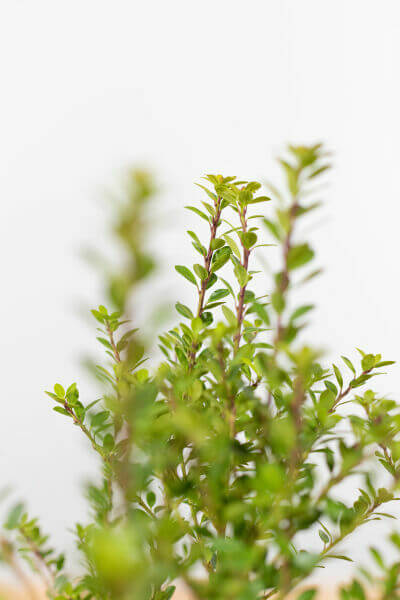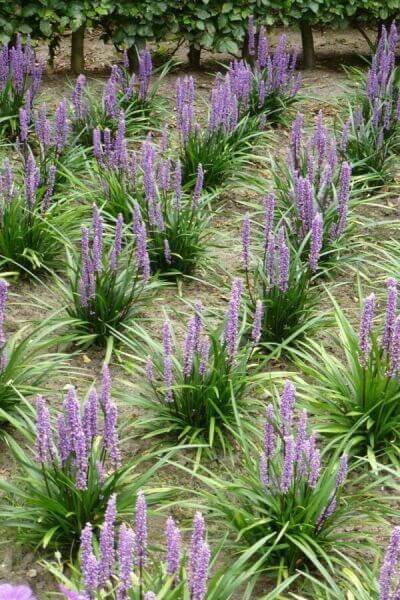Hedge Plants For Natural Barriers
Hedge Plants For Natural Barriers
Blog Article
Compact Hedge Plants For Urban Gardens
Improve your garden's appeal with lavish hedge varieties such as Yew (Taxus), Thuja, Laurel, Photinia, and Bamboo, commemorated for their structural integrity and ecological benefits.
Yew and Thuja supply evergreen coverage and winter season resilience, while Laurel uses rapid growth and broad, aromatic leaves.
Photinia adds seasonal appeal with its lively red foliage, and Bamboo lends a low-maintenance, peaceful atmosphere.
These hedges improve air quality, minimize sound, and create tranquil, private areas.
Correct planting, spacing, and maintenance guarantee energetic development and ecological harmony.
Check out how these lavish varieties can elevate your garden's charm and wellness.
Key Takeaways
Change Your Garden With Lush Hedge Ranges
- Select Yew for its thick, evergreen growth and unrivaled durability.
- Go with Laurel for its fast growth and broad leaves, ensuring quick privacy.
- Select Photinia for its dynamic seasonal foliage, which turns a striking dark red.
- Make use of Bamboo for a low-maintenance, winter-hardy hedge with visual appeal.
- Area plants 2-3 per meter and prune regularly for optimal growth and health.
Popular Hedge Plants
When transforming a garden with lush hedge varieties, it's vital to consider popular hedge plants such as Yew, Thuja, Laurel, and Photinia due to their distinct attributes and advantages.
Yew (Taxus) is extremely respected for its durability and dense, green growth, making it a prime choice for withstanding landscapes.
Thuja is kept in mind for its evergreen foliage and robust winter season strength.
Photinia includes seasonal vibrancy with red leaves that darken with time, developing vibrant visual appeal.
Laurel provides fast growth and fragrant, broad leaves, ideal for fast personal privacy.
Furthermore, Bamboo is an outstanding choice for ambiance, providing a low-maintenance, winter-hardy alternative that boosts the garden's visual with its sophisticated, swaying walking sticks.
These selections cater to a variety of horticultural requirements and preferences.
Advantages of Garden Hedges
Garden hedges provide a wide variety of benefits, making them a valuable addition to any landscape. These natural barriers are cost-effective to carry out and offer significant wind defense, boosting air flow and contributing to sound reduction. The thick foliage of hedges like Thuja and Beech guarantees privacy by blocking exposure, creating a tranquil and secluded environment.
Hedges also play a crucial function in microclimate policy, supplying a stable environment that fosters plant development and minimizes temperature level fluctuations. Their detailed leaf structures filter contaminants, enhancing air quality and contributing to a much healthier garden ecosystem.
Additionally, hedges master sound reduction, taking in and deflecting acoustic waves to lower ambient noise levels. This double performance of providing both visual and acoustic privacy boosts the overall harmony and aesthetic appeal of any garden.
Planting and Upkeep Tips
For a successful hedge, precise preparation of the planting area is essential. Make sure the soil has proper pH and drain to support strong root advancement.
Space the plants properly for the picked species. Water the hedge often throughout its initial growth phase, changing as needed with seasonal changes.
Execute a organized pest control and disease avoidance method, utilizing organic or chemical treatments when needed. Frequently inspect for aphids, mites, and fungal infections.
Apply mulch to keep wetness and reduce weeds. Seasonal pruning promotes thick growth and air circulation, important for plant health.
Following these standards will help you cultivate a lively, well-maintained hedge that improves the appeal of your garden.
Spacing and Cutting Standards
Spacing and Cutting Standards
Correct spacing and cutting are vital for cultivating healthy, visually appealing hedges. Adequate spacing ensures each plant receives sufficient nutrients, light, and air flow.
Follow these standards for optimum hedge upkeep:
- Spacing: Position hedge plants 2-3 plants per meter to motivate robust development.
- Pruning Methods: Routine pruning is vital for preserving preferred hedge height and shape. Trim new growth in summer and cut back older wood throughout winter season.
- Seasonal Care: Adjust trimming schedules and methods according to seasonal requirements to make sure plant health.
- Hedge Height: Frequently display and trim to maintain the desired hedge height and attain consistent aesthetic appeals.
Complying with these actions will guarantee your hedge grows, boosting both the appeal and performance of your garden.
Choosing the Right Hedge
Choosing the Right Hedge
Selecting the appropriate hedge involves evaluating factors such as mature height, foliage density, and environmental resilience. Successful hedge plant selection needs comprehending each types' growth attributes and site-specific versatility.
For example, Yew (Taxus) offers exceptional durability and dense development, while Thuja is notable for its winter season durability. In addition, thinking about maintenance requirements is important; fast-growing species like Laurel or Privet need regular cutting, whereas low-maintenance options like Bamboo or Ivy may be preferable for those looking for minimal upkeep.
Ecological elements such as soil type, light availability, and moisture conditions need to also assist the selection procedure. This careful method makes sure the picked hedges will flourish, providing both practical and aesthetic advantages to the garden landscape.
Shipment and Planting Recommendations
To guarantee your hedge plants flourish, they must be provided by specialized couriers and planted immediately upon arrival.
Follow these necessary steps for successful planting:
- Soil Preparation: Enhance the soil with raw material to improve drainage and nutrient content.
- Planting Depth: Develop a trench two times the width and equal to the depth of the root ball.
- Watering Techniques: Water completely after planting, keeping the soil regularly wet however not saturated.
- Mulching: Apply a layer of mulch to keep wetness and reduce weeds.
Consumer Assistance and Service
Provided the vital role of prompt support in horticultural pursuits, our consumer assistance team is available six days a week through telephone, e-mail, and social networks to use skilled guidance and quickly attend to any issues. Their commitment to fast reaction times guarantees consumer fulfillment by solving queries related to plant health, optimal planting methods, and upkeep schedules.

Response Time
This comprehensive support system, strengthened by an outstanding 9.3/ 10 consumer ranking, highlights our commitment to enhancing the gardening experience for every client.
Often Asked Questions
For How Long Does It Take for Hedge Plants to Establish?
Hedge plants normally need one to three years to become completely established, with the precise duration differing by types and growing conditions.
Efficient care throughout this vital period is important for robust growth. Consistent watering, vigilant weed control, and appropriate fertilizer application are pivotal in promoting strong root advancement.
For instance, fast-growing species like Laurel may establish faster, while slower-growing ranges such as Yew may take longer. Persistent maintenance accelerates the facility procedure, leading to dense and healthy hedges.
What Are the Finest Hedge Plants for Personal Privacy?
The concern of the very best hedge plants for privacy includes assessing evergreen and deciduous choices.
Evergreen hedges like Thuja, Laurel, and Cypress provide year-round coverage, making sure constant privacy.
In contrast, deciduous hedges such as Beech use seasonal personal privacy, shedding leaves in colder months.
Secret Additional hints upkeep suggestions for personal privacy hedges include regular cutting, fertilizing in spring, and proper spacing-- typically 2 to 3 plants per meter.
In addition, consistent watering and diligent weed elimination are important for promoting healthy, dense development.
Can Hedge Plants Attract Wildlife to My Garden?
Yes, hedge plants can bring in wildlife to your garden by offering essential advantages like shelter, food, and nesting sites, therefore enhancing regional biodiversity. Yew, holly, and laurel are exceptional for attracting birds, while ivy supports a range of insects.
Nevertheless, it is very important to note that there are some downsides, such as increased maintenance to handle pests and regular maintenance. Carefully choosing and maintaining hedge varieties can assist stabilize these benefits and disadvantages, ultimately promoting a sustainable and vibrant environment in your garden.
Exist Any Flowering Hedge Plants Available?
Yes, there are flowering hedge plants offered that can boost the beauty of your garden.
For example, Elaeagnus, likewise referred to as Olive Willow, produces fragrant white flowers in the fall, adding a touch of sophistication.
Photinia, another popular option, showcases vibrant red leaves that mature into an abundant green, developing a vibrant visual effect throughout the seasons.
To ensure these plants prosper, it's necessary to practice correct pruning techniques and seasonal maintenance, such as trimming brand-new development in the summer and cutting back in the winter.
These steps will help preserve the health and visual appeal of your blooming hedges.
How Do I Avoid Bugs in My Hedge Plants?
To avoid bugs in hedge plants, use natural bug control methods and maintain proper hedge care. Introduce beneficial insects like ladybugs, which prey on harmful pests, to create a well balanced environment.
Frequently check your hedges for indications of problem and without delay get rid of any afflicted parts to prevent the spread. Guarantee the health of your hedges by applying well balanced fertilizers and offering sufficient water.
Use mulching to retain soil moisture and correct spacing to decrease plant stress and promote robust development. These practices jointly assist in reducing pest issues and keeping a healthy hedge.
Conclusion
In essence, picking the best hedge varieties such as Yew, Thuja, and Laurel can change any garden into a relaxing haven. These plants provide year-round plant, improve aesthetic appeal, and deal practical benefits like sound reduction and wind defense.
Correct planting methods, accurate spacing, consistent watering, and seasonal cutting are important for optimal development.
Trusted shipment services and expert consumer support ensure a smooth experience from purchase to planting, making it simpler than ever to raise your outdoor area.
Garden hedges offer a plethora of advantages, making them a valuable addition to any landscape. These natural barriers are cost-efficient to execute and supply considerable wind protection, improving air circulation and contributing to sound decrease. The dense foliage of hedges like Thuja and Beech makes sure privacy by blocking visibility, producing a serene and secluded environment.

Pruning Methods: Regular pruning is necessary for preserving desired hedge height and shape. Cut new development in summertime and cut back older wood during winter season.
Report this page